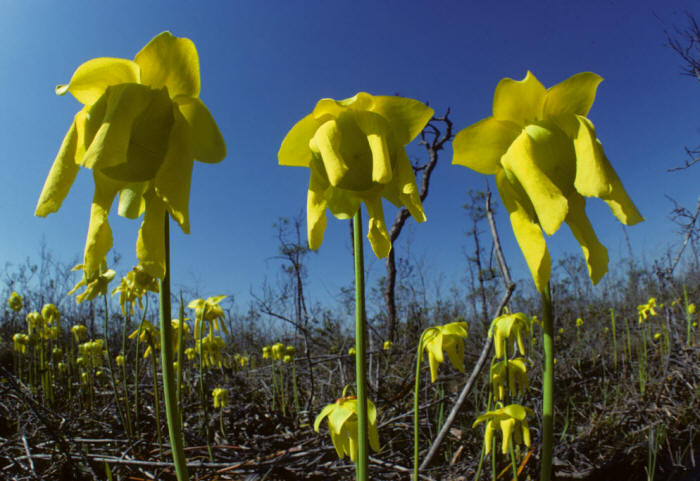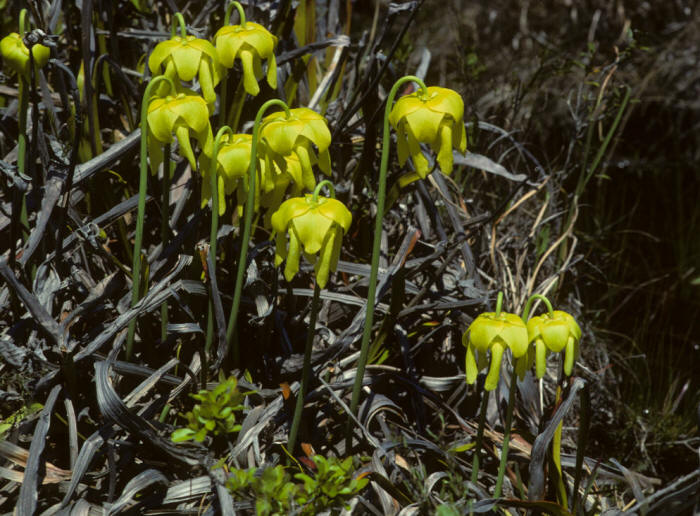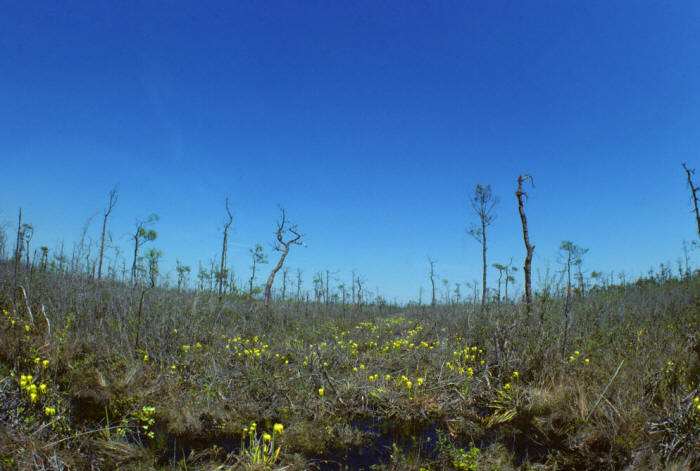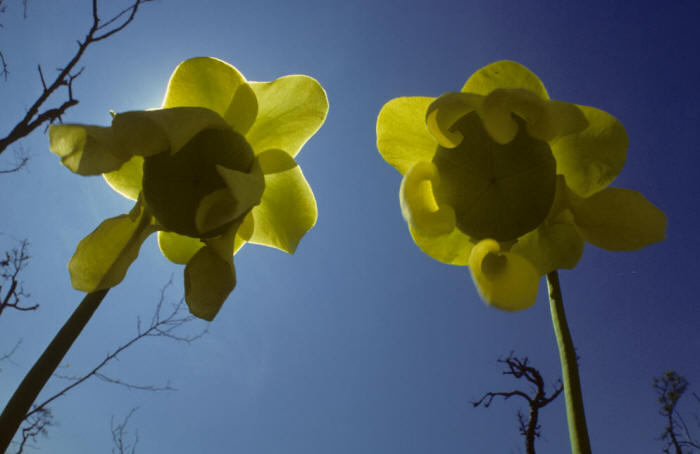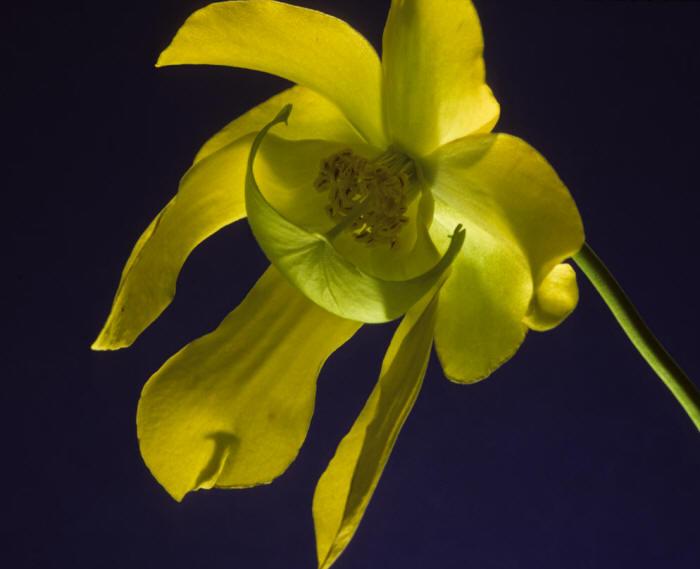|
Carnivorous Plants Story
|
||
|
|
Sarracenia flava IIn the field, the pitcher leaves typically die back completely during winter, and large, conspicuous, bright yellow flowers are seen blooming among the blackened leaves of the previous season. The scapes are far shorter than the average height of the pitcher, but will clearly stands out among the shriveled, tilted leaves. New leaves sprout out after the flower, providing a clear temporal separation between pollination and prey trapping.
When the trigger hairs on the inner surface of the trap lobes are stimulated, the clam-shell-shaped trap closes suddenly --- often in less than a half second --- fast enough to capture such agile insects as a fly quite comfortably. Intermeshing marginal spines effectively prevent the prey's escape. After the initial rapid closure, the insect's struggle inside the trap further stimulates the trigger hairs, causing the trap lobes to close even more tightly. In a day or so, the trap is seen tightly sealed around the free margins of the lobes, with the marginal spines pointing outwardly. The digestive fluids start to ooze into the now sealed trap cavity. As the digestive process progresses, the products of digestion are swiftly absorbed through the leaf and are carried away to the other parts of the plant.
pe. After the initial rapid closure, the insect's struggle inside the trap further stimulates the trigger hairs, causing the trap lobes to close even more tightly. In a day or so, the trap is seen tightly sealed around the free margins of the lobes, with the marginal spines pointing outwardly. The digestive fluids start to ooze into the now sealed trap cavity. As the digestive process progresses, the products of di
pe. After the initial rapid closure, the insect's struggle inside the trap further stimulates the trigger hairs, causing the trap lobes to close even more tightly. In a day or so, the trap is seen tightly sealed around the free margins of the lobes, with the marginal spines pointing outwardly. The digestive fluids start to ooze into the now sealed trap cavity. As the digestive process progresses, the products of di
Introduction Venus Flytrap Sundews Pitcher Plants Cobra Plant Butterworts Bladderworts
|
|
